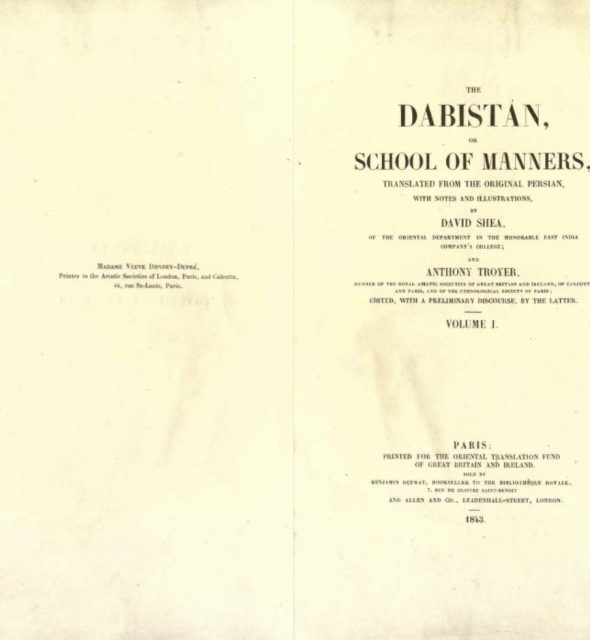DIPA, BHAI, was a devoted Sikh of Guru Arjan\'s time (Bhai Gurdas, Varan, XI. 22). He zealously served in the Guru ka Larigar. He cooked food and served it to visiting Sikhs. He took the last turn and ate what was left over. He washed with warm water the feet of those who came from afar and kneaded their limbs to relieve them of fatigue. On cold winter nights he went round adjusting the quilts and coverlets of sleeping visitors. Upon his lips were always the Guru`s hymns.
DUSANJH KHURD, village 3 km south of Banga (31° ll`N, 76°E) in Jalandhar district of the Punjab, has a historical shrine called Gurdwara Guru Har Rai Sahib Patshahi Satviri (seventh) dedicated to the Seventh Guru, Guru Har Rai. In 1940, the local sangat raised a new building on the site of the older shrine. The Guru Granth Sahib is seated on a high dais in the centre of the central hall, to which another hall was added later. Residential quarters and Guru ka Langar are on the left of the main building. The Gurdwara is affiliated to the Shiromani Gurdwara Parbandhak Committee.

DABISTANIMAZAHIB, a seventeenth century work in Persian, is a unique study of different religious creeds and systems, including early Sikhism. It first attracted wide notice when it was translated into English by David Shea and Anthony Troyer and was published by Oriental Translation Fund of Great Britain and Ireland, London, in 1843. The section on Nanakpanthis, i.e. Sikhs, was first translated into English by Sardar Umrao Singh Majithia, and into English and Punjabi by Dr Ganda Singh.
DALIP SINGH, SANT (1883-1948), son of Ishar Singh and Har Kaur, was born in 1883 at the village ofLahri, in Hoshiarpur district. He was hardly five years old, when his father died. He was brought up by his maternal grandfather, Nihal Singh, at his village Dumeli. He received his early education from a local Sikh priest, who also trained him in the singing of gurbani. Dalip Singh was a child with peculiar traits.
DARBARA SINGH, BHAI (d. 1921), still in his teens when he fell a martyr at Nankana Sahib in 1921, was the son of Bhai Kehar Singh and Bibi Ratan Kaur. His father was serving in the Indian army as a havildar (sergeant) and he was born at a cantonment station. His mother died when he was a bare three weeks old, and he was brought up by his grandmother. His father originally belonged to Jarg village, then in the princely state of Patiala, but some time after his retirement in 1908 he migrated to Chakk No. 85 Dalla Chanda Singh in a newly developed canal district.
DEVA SINGH NAROTAM, PANDIT (d. 1924), Nirmala scholar, was the son of Mahitab Singh of the village of Janetpura, 13 km north of Jagraori (30° 47`N, 75° 28`E), in Ludhiana district of the Punjab. He received his early lessons in the Sikh texts at the hands of Bhai Gurdit Singh and then left home to continue his studies under Sant Nattha Singh of Gurdwara Tapiana Sahib at Khadur Sahib, in Amritsar district, and later under Sant Mahna Singh (d. 1890) at the Nirmala dera or monastery at Khandur, near Mullaripur, in Ludhiana district. He accompanied Sant Mahna Singh to Bhai Rupa, a village 18 km north of Rampura Phul in Bathinda district, to join the Nirmala monastery called Dera Khuharivala. Here, Deva Singh, already reputed enough as a scholar to be known as pandit (lit. learned scholar), was put by his mentor through a course of comparative study of gurbani in the light of his knowledge of Sanskrit and Vedanta.
DHAND, village 15 km southwest of Amritsar (31° 38`N, 74° 52`E) along the ChhehartaJhabal road, is sacred to Guru Hargobind (1595-1644), who once came here to fulfil the wish of an old Sikh, Bhai Langaha. Gurdwara Patshahi Chhevin commemorating the visit stands on the southern outs kirts of the village. Its present building was constructed by Sant Gurmukh Singh Sevavale in 1929. The Guru Granth Sahib is seated on a canopied seat of white marble in the doublestoreyed sanctum in the middle of the divan hall.
DHARO, BHAI, a Sikh of Sultanpur Lodhi and a soldier by profession, went to Guru Arjan in the sangat of his town. The Guru gave them his blessing (See AKUL, BHAI and BHIKHA. BHATT). According to Bhai Man! Singh, Sikhan di Bhagat Mala, Guru Arjan spoke to Bhai Dharo: "There are warriors who vanquish their foe, and there are those who reign victorious over their own minds. The triumphs of the former are sung by bards, but the glory of the latter is sung by saints."





